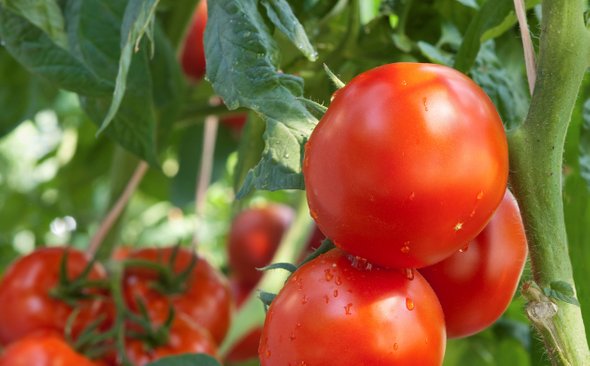(单词翻译:单击)
听力文本
Hi, I'm Scientific American podcast editor Steve Mirsky. And here's a short piece from the May 2018 issue of the magazine, in the section we call Advances: Dispatches from the Frontiers of Science, Technology and Medicine:
Watchful Plants by Erica Tennenhouse
Plants cannot run or hide, so they need other strategies to avoid being eaten. Some curl up their leaves; others churn out chemicals to make themselves taste bad if they sense animals drooling on them, chewing them up or laying eggs on them—all surefire signals of an attack. New research now shows that some flora can detect an herbivorous animal well before it launches an assault, letting a plant mount a preemptive defense that even works against other pest species.
Snail slime is a lubricating mucus the animals ooze as they slide along. When ecologist John Orrock of the University of Wisconsin–Madison squirted snail slime into soil, nearby tomato plants appeared to notice. They increased their levels of an enzyme called lipoxygenase, which is known to deter herbivores. Orrock says, "None of the plants were ever actually attacked. We just gave them cues that suggested an attack was coming, and that was enough to trigger big changes in their chemistry."
Initially Orrock found this defense worked against snails. In the latest study, his team measured the slimy warning's impact on another potential threat. The investigators found that hungry caterpillars, which usually gorge on tomato leaves, had no appetite for them after the plants were exposed to snail slime and activated their chemical resistance. This nonspecific defense may be a strategy that gets the plants more bang for their buck by further improving their overall odds of survival, says Orrock, who reported the results with his colleagues in the journal Oecologia.

The finding that a snail's approach can trigger a plant response that affects a different animal intrigued Richard Karban, a plant communications expert at the University of California, Davis. Karban was not involved in the study, but he said, "it is significant that the plants are responding before being damaged and that these cues are having such far-ranging effects." Karban wonders how the tomato plants detected chemicals in snail slime that never actually touched them.
Says Orrock, "That's the million-dollar question." He hopes future research will tease out the mechanisms that enable plants to perceive these relatively distant cues.
That was Watchful Plants by Erica Tennenhouse.
参考译文
大家好,我是《科学美国人》播客编辑史蒂夫·米尔斯基。以下是收录在本杂志五月刊“进展:科学、技术和医学前沿快报”版块中的一篇短文。
《机警的植物》 作者:艾丽卡·田纳豪斯
植物不能跑也不能躲藏,因此它们需要其他避免被吃掉的战略。有些植物会卷起叶子;其它植物在感知到有动物对自己“垂涎三尺”或“在咀嚼”或“在自己身上产卵”等所有确定的袭击信号时,会大量分泌化学物质让自己变得难吃。现在,新研究表明,一些植物群可以在食草动物发动攻击前发现其意图,这使植物能准备先发制人的防御措施,这些措施甚至可以对抗其它害虫。
蜗牛粘液是蜗牛爬行时分泌的一种润滑粘液。当威斯康星大学麦迪逊分校的生态学家约翰·奥洛克向土壤中注入蜗牛粘液时,附近的番茄植株好像有所察觉。这些番茄的脂肪氧化酶水平会上升,这种酶已知被用来检测食草动物。奥洛克说,“没有番茄植株真的受到攻击。我们只是给出表示攻击即将来临的提示信息,这足以触发番茄植株内化学物质的重大变化。”
一开始,奥洛克发现这种防御用来对抗蜗牛。但在最近的研究中,他的团队测量出这种粘液警告对另一种潜在威胁也有作用。研究人员发现,经常吞食番茄叶子的饥饿毛虫,会因为番茄接触蜗牛粘液并激活耐化学性后而变得没有胃口。奥洛克说,这种非特定防御可能会成为一种策略,让番茄通过进一步改进整体生存率来获得更多回报,奥洛克和同事的研究结果发表在《生态学》期刊上。
蜗牛的靠近会触发植物的反应,而这一反应还会影响其它动物,这一研究结果令加州大学戴维斯分校的植物交流学家理查德·卡班很感兴趣。卡班没有参与研究,但他表示,“重要的是,植物在受到伤害前就做出反应,而且这些反应信号还产生了如此广泛的影响。”卡班想知道,番茄植株是如何在并未实际接触蜗牛粘液的情况下检测到化学物质的。
奥洛克说,“这是个价值百万美元的问题。”他希望未来的研究能梳理出让植物察觉到这些相对较远信号的机制。
以上是艾丽卡·田纳豪斯发表的文章《机警的植物》。
译文为可可英语翻译,未经授权请勿转载!
重点讲解
重点讲解:
1. curl up (叶子、纸等)卷边;
The corners of the lino were curling up.
油地毡卷角了。
2. churn out 快速生产;大量生产;
A typical plant will churn out 3,000 silicon wafers every hour, with each wafer forming one solar cell.
一家工厂通常每小时能生产3000个硅晶片,每个晶片就构成一枚太阳能电池。
3. gorge on 贪婪地吃;狼吞虎咽;
I could spend each day gorging on chocolate.
我可以每天只吃巧克力就够了。
4. tease out 套取,套出,巧妙获得(信息或答案);
The researchers say follow-up studies are needed to tease out the relationship between television and happiness.
研究人员称他们将开展进一步研究以理清看电视与快乐之间的关系。


